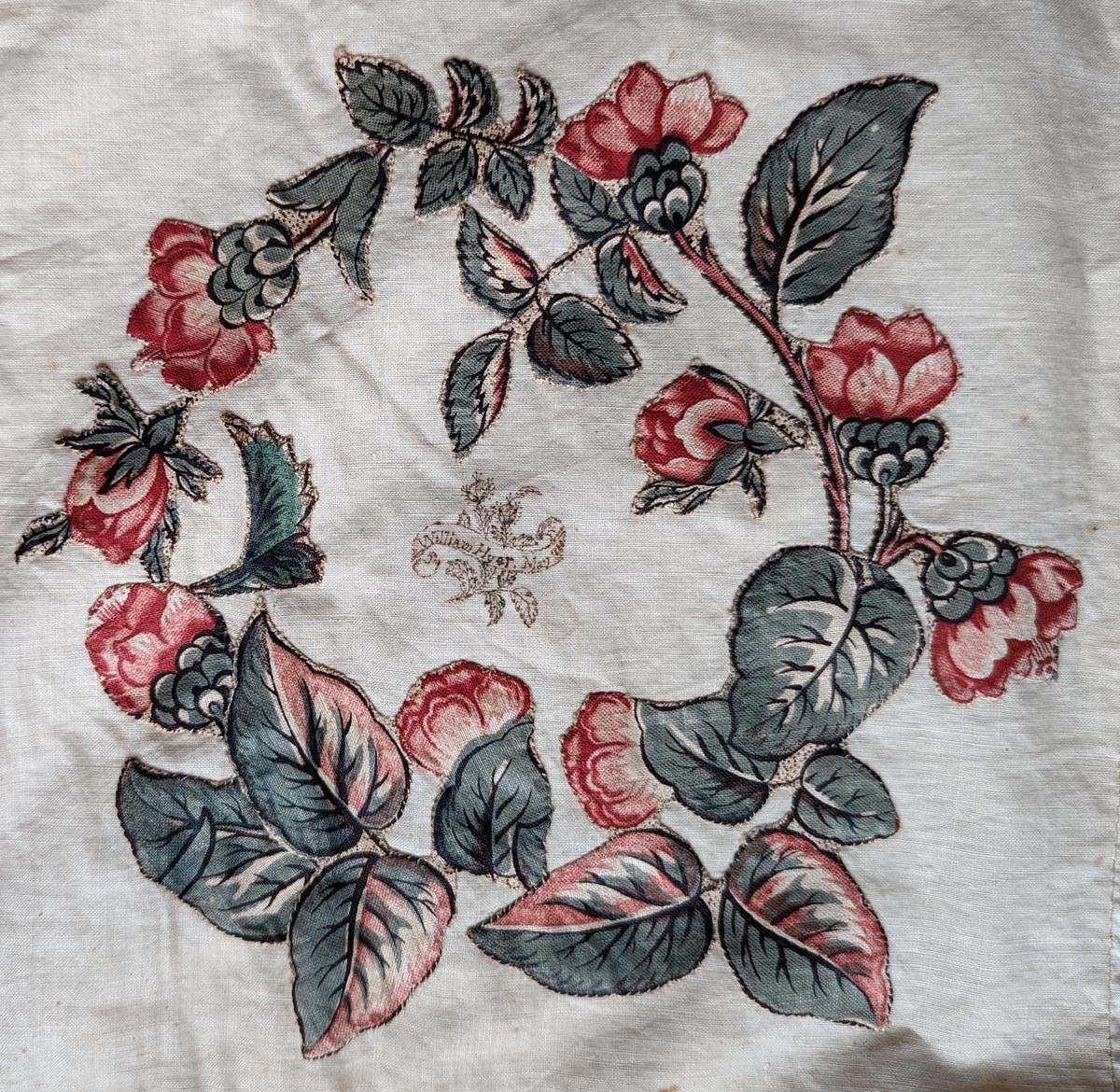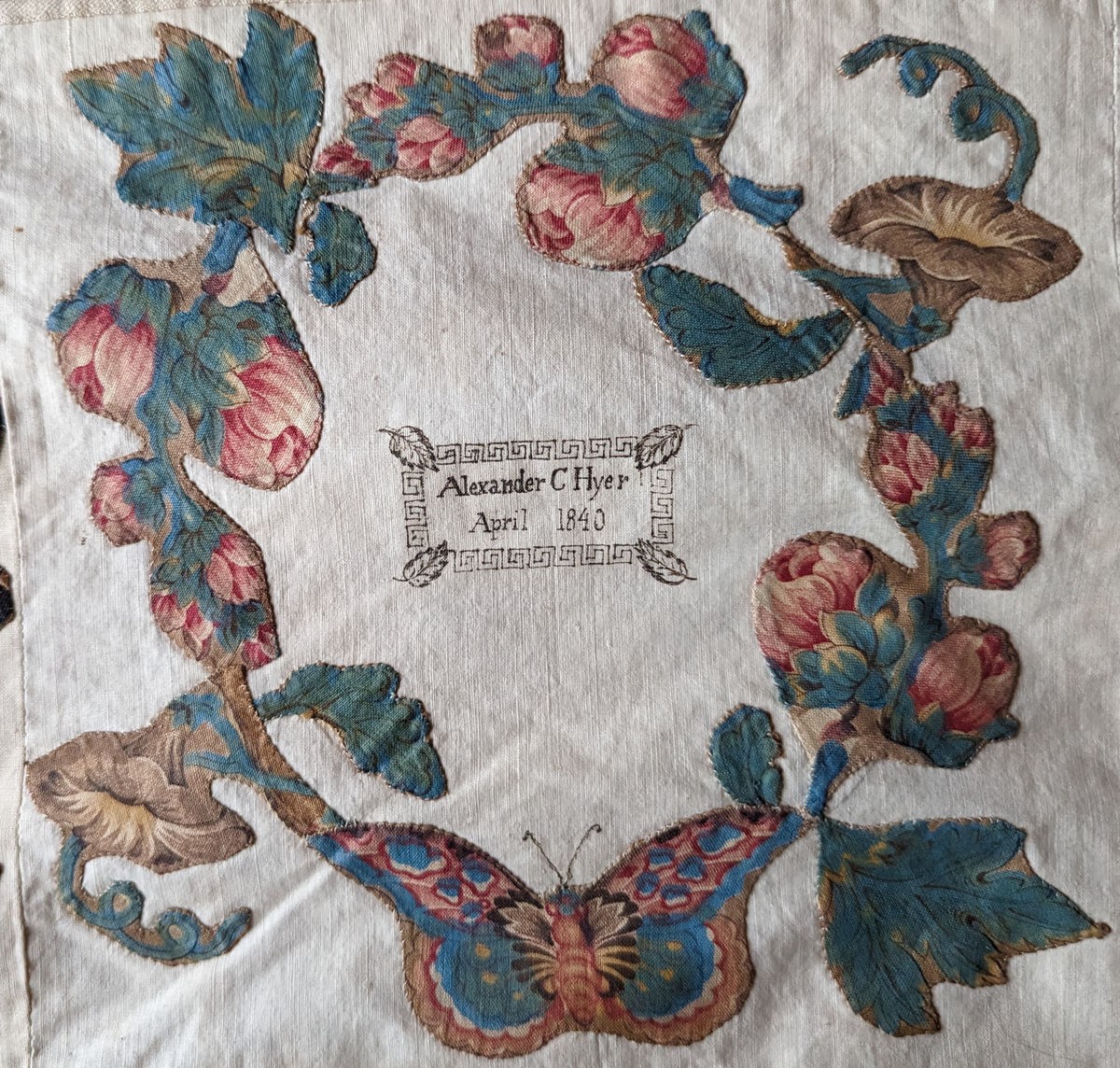Textiles and the Triplett Sisters
NSCA: Machette & Taylor Coverlet, The Hyers

The Hyers are a reminder that the Machette coverlet (the earliest of this group) is less about fundraising and businesses, but more about family and neighbors. There are 10 Hyer family inscriptions, including William Jacob Hyer, who was the patriarch of the inscribers on the coverlet. William Hyer was born on December 11, 1765, in New Jersey and was admitted to the New Jersey bar in 1789. He married Sarah Chambers in 1796. (Note there are six Chambers family inscriptions on this coverlet and one on the DAR Fish Album Quilt. In addition, Emma Fish did marry into the Chambers family.) In 1807 William Hyer was a clerk for the Supreme Court, a position he held for 4 years before being appointed the Clerk of the Court of Chancery by the Governor. He had his own firm “William Hyer & Co. where he was also a merchant and agent in Philadelphia. He died in August of 1840, a few months after his inscription on the coverlet.

His son Alexander Chambers Hyer, also worked in the family firm as a commission merchant as well as a real estate agent. Ads in the Philadelphia paper also noted that he was selling china, glass, and Queens ware (Wedgewood). S.V. Hyer is also listed at the same address as Alex in the business directory with “china” after her name, although it isn’t clear if she is making it or selling it. She is possibly the Sarah V. Hyer inscribed on the quilt. There are two Alexander C Hyer blocks, and the second one is likely Alex Sr.’s son. Sadly, in May of 1842 Alexander filed for bankruptcy which was granted in June of the same year. (To see the second Alexander C. Hyer block and more follow this link.)
The Hyers were neighbors of Susan Machette, the mother of Edwin V. Machette (possibly the groom.) The gentlewoman (widow) lived in the Spring Garden neighborhood which included the area known as Palmyra Square, a term that has gone out of use now but was a square on Vine from 10th to 11th where banks and merchants were located. The area was likely considered desirable as there are many references to the square in newspaper ads etc., whether the address was located on the square or simply nearby.

